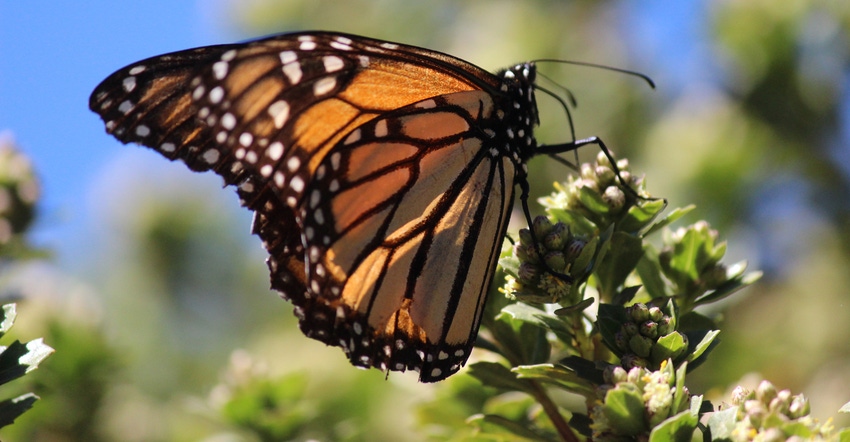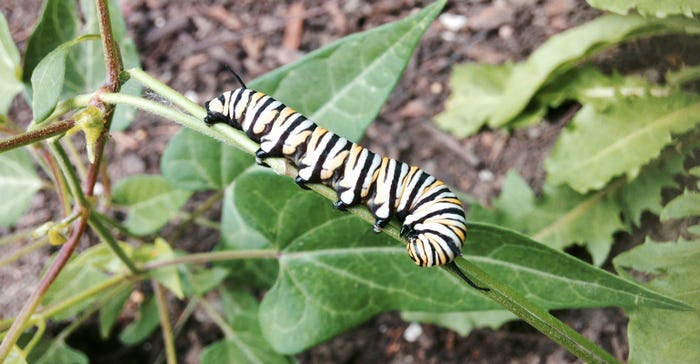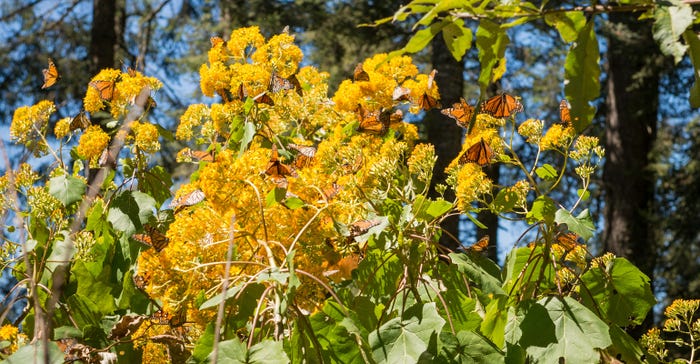
If you love monarch butterflies, you are in good company. It seems that environmentalists, farmers, school kids, tourists, zoo visitors, flower lovers, gardening enthusiasts and just about everybody else agrees that monarchs are a precious resource.
This spring, agribusiness giant Monsanto, along with several partners, is joining the ranks of monarch protectors as part of Farmers for Monarchs, an educational effort to encourage more farmers and rural communities to plant milkweed, the only plant that the larvae of monarchs eat.
"Restoring habitat is super important," says Aimee Hood, a Monsanto employee who is a key member of the effort. "Farmers can play are big role in the restoration effort. Milkweed can grow at the edges of fields, along roadways and in yards and gardens."
The journey of the monarchs is one of the intriguing mysteries of nature. The butterflies migrate from their summer home in Canada to overwinter in Mexico. They do not reproduce on the trip south. When they start their journey from Mexico back to Canada, however, they lay their eggs on milkweed plants. The eggs hatch, the larvae feed on the blooming milkweed plants and mature to a butterfly in about six weeks. The newly emerged adult then resumes the journey, laying eggs on milkweed plants along the way. It is the third or fourth generation descendants of the butterflies that leave Mexico that arrive in Canada.
Hood says it is essential that there be milkweed in bloom in mid-March in the southern U.S. for those monarchs at the beginning of their journey and later in the spring moving northward toward Canada.

LARVAL MONARCH: Monarch larvae feed only on milkweed plants. A loss of milkweeds in the landscape is a threat to the monarch survival.

Monarch watchers are aware that the numbers of monarchs have dropped.
"Scientists have been working for years on how to count the butterflies and figure out the population. The way they count is by measuring how much land area they occupy during the winter in Mexico," she says. "They live on stored sugar through the winter, leaving their perch once or twice a day to go get water, then they go back and perch again. It's exciting to go down there and see them all. They are everywhere, weighing down the branches of trees."
The long-lived generation makes the flight south and survives the winter. The northward migrating generations have a much shorter lifespan.
Hood says the Farmers for Monarchs initiative is trying to get the message out to farmers about the importance of habitat for monarchs and for other pollinators as well. She says scientific studies have verified that there is no difference between the pollen of genetically modified plants and the pollen of traditional plants.
Partners in the Farmers for Monarchs initiative, in addition to Monsanto, are the American Farm Bureau Foundation, the St. Louis Zoo, Syngenta, Sand County Foundation, Monarch Watch, DuPont Pioneer, Dow Agrosciences, Bayer, BASF, the Bee and Butterfly Fly Habitat Fund, the National Corn Growers Association, and the National Association of Wheat Growers.
"We are helping farmers understand the importance of the right habitat and providing the seeds and the tools they need to plant habitat," Hood says, adding that there are a number of available programs that are out there such as the Bee and Butterfly habitat fund where farmers can get seed and cost share funding they need to establish and maintain habitat.
There are a number of pollinator attractive plants available with seasonal blooming patterns that make nectar available for a long period of time. Not just for monarchs, but for any number of pollinator species, Hood adds.
She says climate change has presented some additional challenges to migrating monarchs.

POLLINATOR HABITAT: One of the appealing things about habitat for pollinators is plants that bloom at different times of the season. Homeowners get the joy of a long season of color while bees and butterflies have food that lasts all summer.

"September and October were very, very warm last year, and some of the butterflies did not head back toward Mexico until later in the fall. Then they hit Texas and it was very cold," Hood says.
Farmers can't do much about seasonal change, she says, but they can help ensure that there will be plenty of food for them as they travel, and that there is milkweed for the next generation to feed on.
"I am always impressed by America's farmers," she says. "Farmers are super smart. I think many people don't give growers enough credit. They know how to get the most from land that is not as productive for crops, and that includes thinking about habitat. There are a surprising number of growers who have installed beehives on their farms."
Hood says her role in the Farmers for Monarchs initiative is enjoyable.
"I get to be out, meet with farmers and talk about the great things that Monsanto does," she says. "Most of our farms are family farms and they are the epitome of sustainability. Modern farmers are able to do things on a scale that promotes protection of the environment."
About the Author(s)
You May Also Like




